An Indian photographer documents life in the world’s largest open air laundromat.
In the 2011 Indian movie Dhobi Ghat, Shai, the main character, falls in love with the young man who washes and hand delivers her clothes every day. Their love is obviously impossible: she’s a wealthy investment banker spending time in Mumbai on a sabbatical; he’s a modest dhobi (washerman) who moved to the big city in search of a better life. Through him, though, she at least rekindles her passion for photography when she decides to shoot him at his place of work, the Dhobi Ghat.
“It’s a photographer’s dream,” explains Sanjit Das, an actual photographer who found an assignment, if not love, in the world’s largest open air laundromat. He photographed Dhobi Ghat for Panos and Sony’s Future of Cities project. To him, Dhobi Ghat is an example of incredible organization amidst the chaos of a large city, and of tradition enduring through modernization. He joined R&K from Malaysia.
Roads & Kingdoms: When did you start working on this story?
Sanjit Das: I shot it about a year ago, but I kept going to Bombay because I’m working on a book about Bollywood actors. It was good to go out to Dhobi Ghat just for a couple of days and shoot, and more than shoot, understand why people still do this. I mean, we all have automatic machines now. And if you’re washing clothes commercially, you would think that you would make it more economical and less time consuming, right? But it was quite interesting to spend time with the dhobis and understand, so I ended up spending most of my time talking to them rather than shooting.
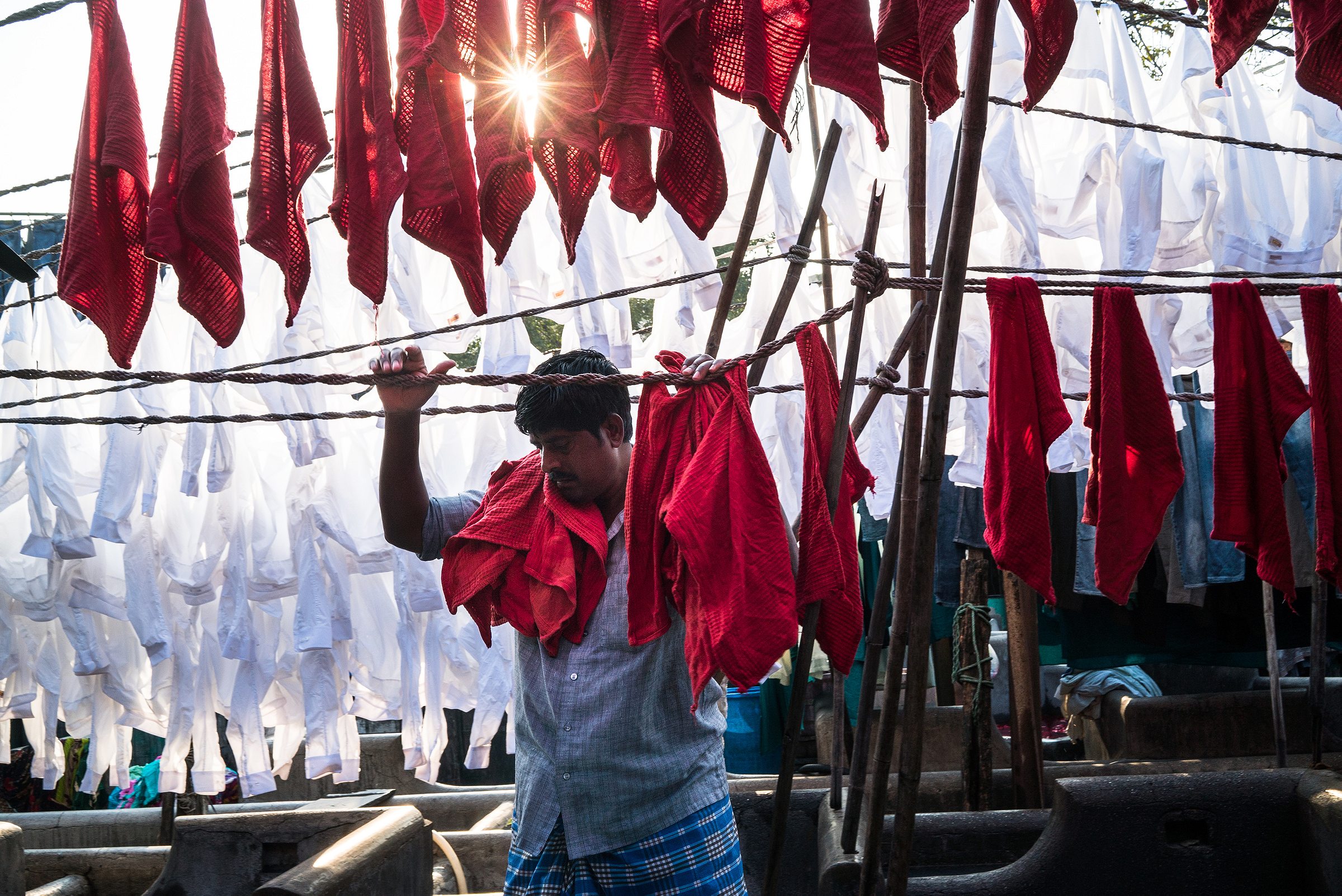
R&K: How famous is this neighborhood?
Das: Dhobi Ghat is very famous. Three quarters of a million [pieces of] clothes are washed there every day, and 7,500 people work there. Clothes come in from all walks of life, from your regular guy who sends his shirt to hospitals, restaurants, five star hotels, and exporters. If you have a factory, for example, and you’re churning out new pairs of jeans for some brand in the U.K. or the U.S., before it goes and gets packed, it has to be washed. So it all goes to Dhobi Ghat. Not all of it is hand washed; there are machines too. It’s quite pretty, you’ve got beautiful shades of light, great geometry, steam, bubbling water, fire, dark alleys, everything. And there’s a train line that divides Dhobi Ghat from the beautiful Mahalakshmi race course.
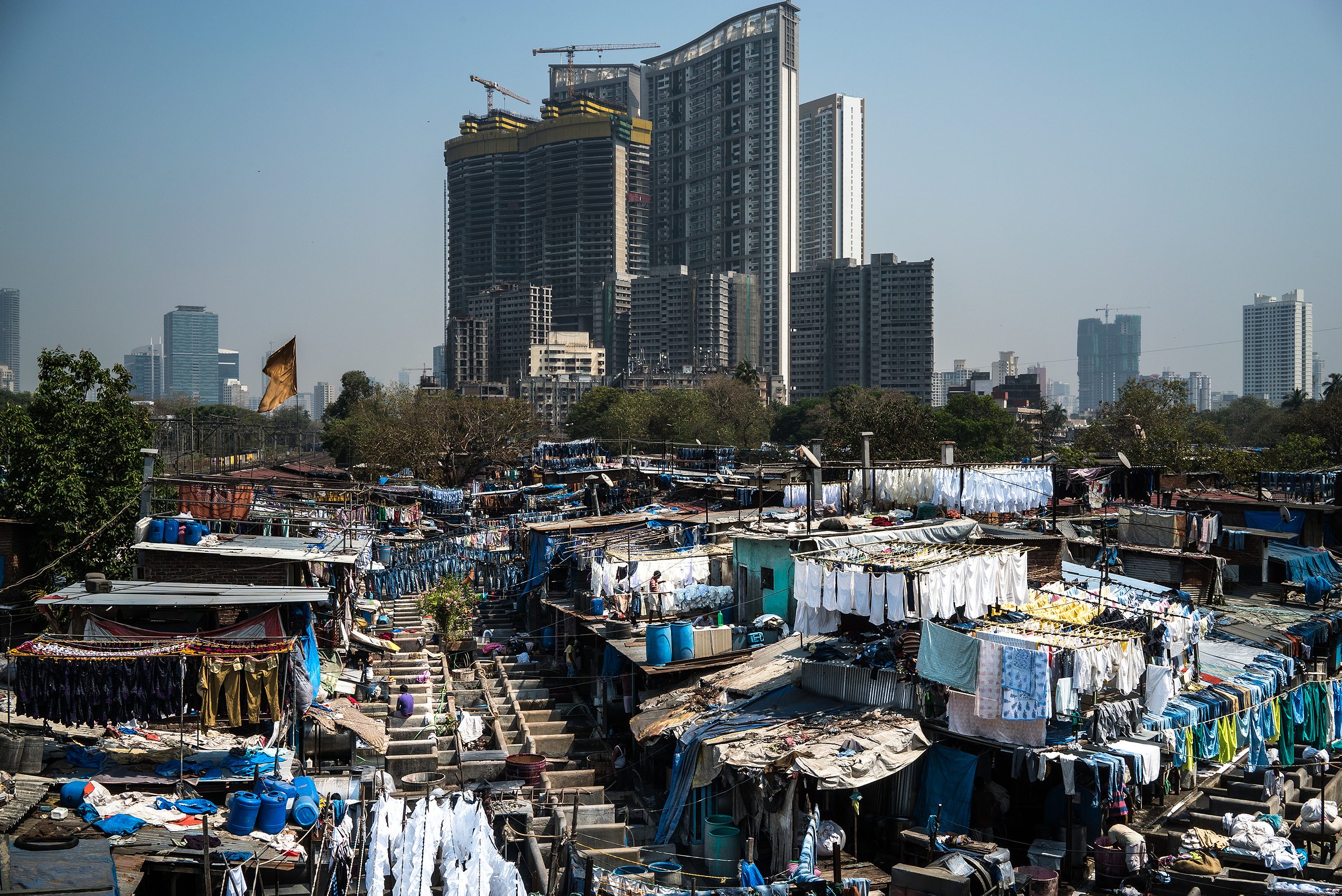
R&K: And it was set up by the British to wash military uniforms?
Das: Yes, the reason for its name is that ghat in Hindi means riverbank. Dhobis always went to ghats to wash clothes, so I suppose when it was established in the late 19th century by the Brits, that’s the only name they could probably think of. What’s incredible is that it’s just five minutes from downtown Bombay.
R&K: So how does it work exactly, do individuals go there or are clothes picked up and brought over?
Das: As a client, you would never go there yourself. You would have a dhobi come over and take your clothes, write a number on your shirts or your pair of jeans, and the guy would get them washed, dried, ironed, and would get you your clothes back in the evening.
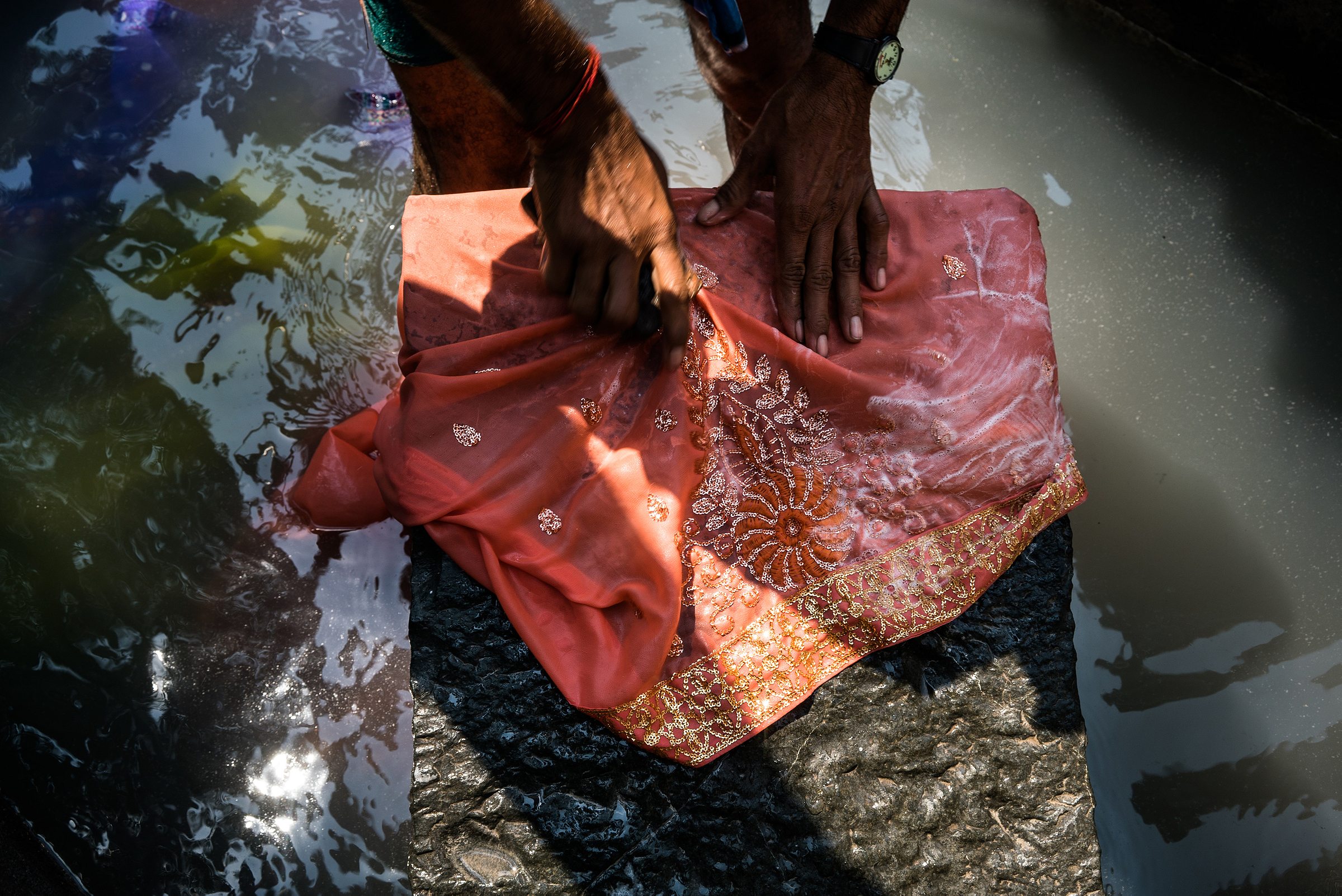
R&K: What does a typical day look like inside Dhobi Ghat?
Das: There are over 200 families who live there, but nobody owns their land. Basically what happens is you rent a square with a stone, which is where you flog the clothes. It costs five dollars a month. A lot of people who work there are migrant workers who come mostly from Uttar Pradesh. A typical day starts at 3:30 or 4 in the morning. I’ve gone even before a ray of sun was out and the guys were there, washing clothes or soaking them in water. They have breakfast at about 8:30 or 9, which is also quite amazing because it’s a communal effort where everybody gets together. Somebody kneads the bread, somebody chops the vegetables, you know, everybody has a role to play and then they have their big breakfast. By 11ish they have to start drying the clothes because the sun is harsh. They can rest while that happens, and then they start again around 3 or 4, when they take the clothes off the wire and start ironing. It’s an early to rise, early to bed kind of life.
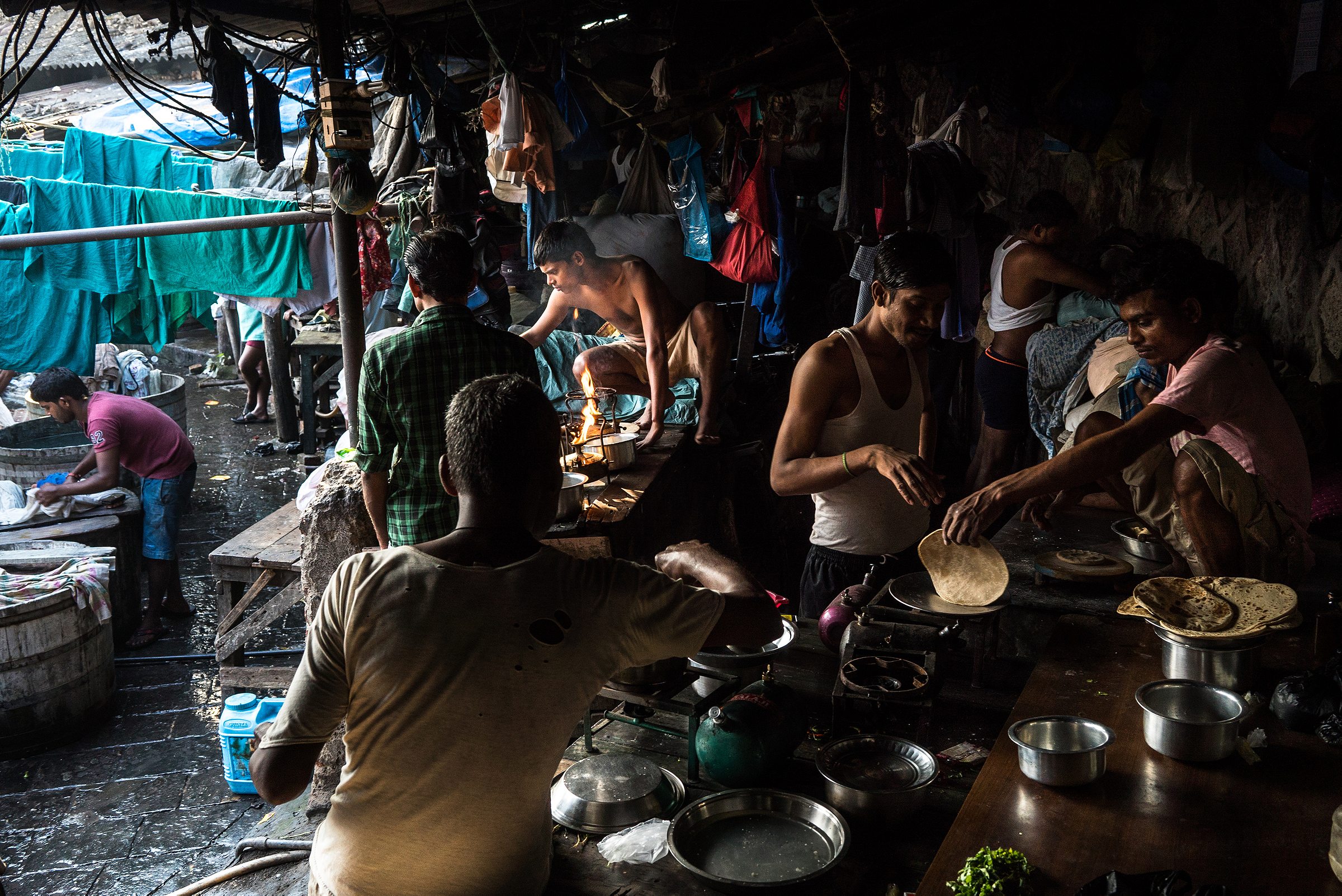
R&K: So are they all competing against each other?
Das: No. Everybody has their own set of clients. You would be surprised, there are a few millionaires in there. When you get an order from an exporter for 2,000 shirts a day, you’re rolling in cash. You might just be charging 20 cents a shirt, but when you multiply that number to the amount of work you get, it’s magnanimous. So what these rich guys have done is that they have installed automatic machines. There are two or three levels to this washing business. The ground level is flogging stones, but when you go up to a floor above, you’ll see the big machines that are washing the clothes. It can be very lucrative. So most dhobis don’t compete because they have enough work. Sometimes they have so much work that they can’t even manage themselves.

R&K: It’s incredible to see such a traditional business endure.
Das: Yes, it’s like the dabba wallahs. Imagine you live in one part of the city and you work downtown. Because of your travel time in Bombay, you need to leave for work very early in the morning, and your wife doesn’t have time to cook a meal that early. So what the dabba wallahs do is that they go to your house and pick up your lunch box with freshly prepared food, and on the dot at one o’clock in the afternoon, they deliver it warm to your office table. At about 2:30, they come to pick up the empty box and it will travel all the way back to your house. There’s a science to it, but nobody knows how it works. There are numbers, codes, it’s amazing. Harvard actually sent students to do some research on how the dabba wallahs work. It’s incredible. So, what’s interesting about Bombay is this mix of history versus future.
R&K: And of systematic order amidst the chaos of the city.
Das: Absolutely. The fact that, in all this mess, you can give your favorite pair of Levi’s jeans to clean knowing it will never get lost. That, for me, is science. That’s the future.
The city revolves around it.

R&K: What do you think the future holds for Dhobi Ghat specifically?
Das: I don’t know. There has been some masterplan about making it into something futuristic, but I think it’s going to carry on. The stakes are too high. The city revolves around it, literally and metaphorically. It’s active, it’s living, and too much money is involved in it. You know Delhi had this plan where they wanted to clean up the slums. What they did is they moved these poor people 45 kilometers outside of Delhi, and suddenly everybody started complaining because their maids were charging four times more money for the job. Well, hey, they were having to come from outside of town. The problem is the ones who have it, they want everything in a way that is convenient to them. But I mean, no. There are lives attached to Dhobi Ghat, there are people working, sending money back home. I get very angry when the poor are not part of the dialogue when it comes to the city.
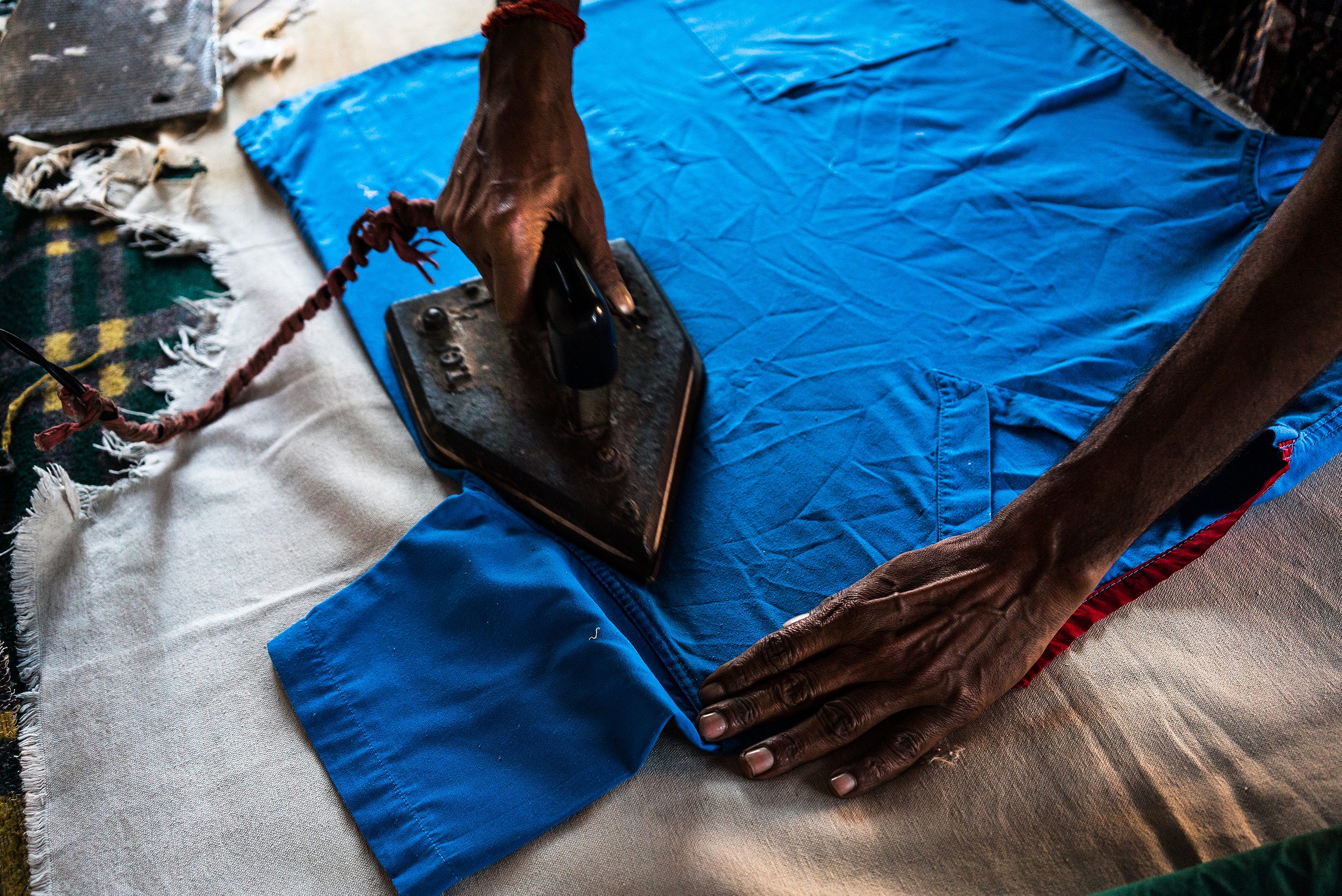
R&K: How are dhobis viewed by the rest of the population?
Das: I think that we tend to take manual work fairly lightly. Nobody pays attention to how much detail, how much work goes into it. People just need to value somebody else’s efforts and if we did that, life would be a lot easier and a better place to live. There’s nothing in this world that is a menial job.
R&K: Were the people you met in Dhobi Ghat proud of what they do?
Das: They definitely felt that they were doing something that was extraordinary. They felt that this was their effort, and that in a way, the city does depend on them. When you have so many people coming to your workplace every day just to take pictures, I mean, you start thinking: maybe I’m important. And they really are.
